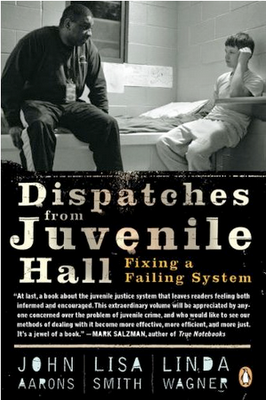Dispatches from Juvenile Hall: Fixing a Failing System

As depressing as they can often be, I’m generally interested in books on social justice issues. It’s essential to know the facts about issues before getting into a spirited debate about them. As an Urban Studies grad student, I’m especially interested in books on social justice as academic material, particularly ones on youth issues. Dispatches from Juvenile Hall engaged both the generally interest and the academically-minded parts of my brain—and it is a great read from either perspective.
Dispatches from Juvenile Hall gains most of its power from the narratives, which are told by their subjects in first person style with brief introductions and conclusions by the authors. We hear from the very people whose lives are most affected by the juvenile justice system: people who are still in the system and those who have been released who are willing to share their stories, as well as those who have spent their lives trying to help those on the inside. The authors, who have decades of experience in youth services work, present the narratives with little embellishment, which works well and are very effective. For someone who has never had firsthand experience with juvenile detention, their words are often brutal and shocking.
Jasmine, the subject of the book’s opening narrative, began using meth when she was eleven years old. A pattern of drug use, incarceration, and running away from home began from there. Michael, now a tattoo artist in South Carolina, was kicked out of his home at sixteen because his mother felt he was old enough to be a man. As a homeless teen, police generally ignored him, until he was apprehended for felony stealing. Stephanie, a high school guidance counselor and former juvenile probation officer, tells stories about the at-risk youth she worked with in both jobs, and stresses the importance of early detection of warning signs that a teen is in trouble.
Dispatches from Juvenile Hall isn’t just a collection of personal stories; there is also a section on how the system can be fixed. It includes a fascinating (if brief) history of juvenile justice in the United States and an analysis of what the authors believe does and does not work when working with juvenile offenders. Clearly, given the rates of juvenile incarceration, the hard-on-crime position currently taken by the juvenile justice system doesn’t deter crime. This is not to say the authors suggest being “soft” on crime; in fact, they argue it’s better to be “smart on crime.”
The authors suggest a blend of corrections reforms—like separating low-, medium-, and high-risk offenders and using cognitive behavioral strategies and gender-specific services—and rehabilitative treatments, and suggest that there can (and should) be a lively, fact-based debate about the United States’ attitude toward juvenile justice. Dispatches from Juvenile Hall is a thoughtful, intelligent, affecting piece of that debate.